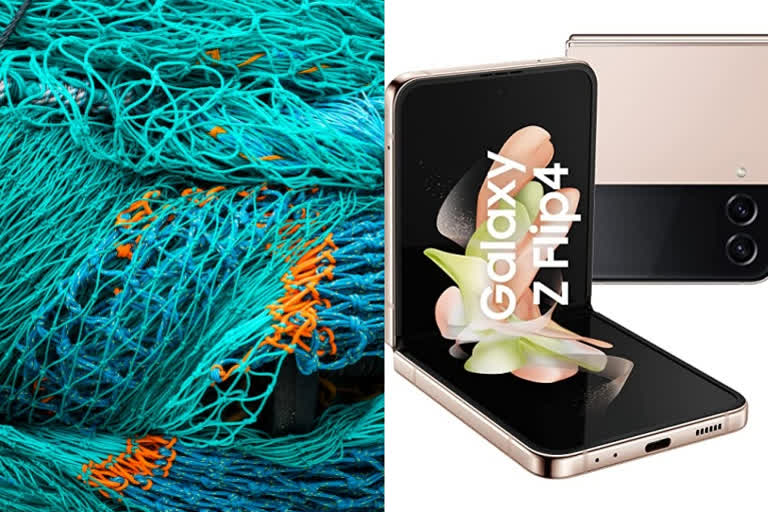New Delhi: As you enjoy the new Samsung foldable devices, do you realise that the blue part you see in Galaxy Z Flip 4 is made of repurposed fishing nets? According to Pranveer Singh Rathore, Materials R&D Manager, Samsung Electronics, the blue part, the side key bracket, basically avoids making your phone waterproof from the side keeper and dustproof.
"So it acts as a barrier to water and dust and improves the durability of your phone. Similarly, with the receiver decode that displays connector Cap and other green parts, they act as housing to the crucial components," he told the media during an interaction." As they are housing the critical components, they act as a barrier and are durable so that they can withstand all kinds of climatic conditions and all kinds of stresses they are exposed to," Rathore added.
Samsung has been in the news for repurposing fishing nets and using them in smartphones. Every year, around 640,000 tonnes of fishing nets end up in our oceans, posing a serious threat to the marine ecosystem. Fishing nets are typically made of nylon materials, which have the basic property of absorbing moisture and water. "Starting with Galaxy S22 earlier this year and now with the new Galaxy Foldables and Galaxy Buds 2 Pro, we are scaling up the use of this innovative material," said the Samsung executive.
Also read: Samsung eyes 2x growth in foldable smartphones this yr; partners Axis Bank for credit card
By the end of 2022, "we hope to prevent more than 50 tonnes of discarded fishing nets from entering our oceans". According to Rathore, they have been researching and developing sustainable materials for over a decade." 2017 is when we started applying post-consumer materials in inbox charges and in 2018, we applied this material across all the products and chargers. This was when we started developing a new material solution to replace fossil-based raw materials with bio-based raw materials, which are renewable," he informed.
By 2019, the company was able to develop this material, and then we applied this material to A and M series smartphones in the display frames. Galaxy Buds 2 Pro contains mostly recycled materials. More than 90 per cent of the plastics used in Galaxy buds 2 Pro are recycled materials. The repurposed fishing Nets are used in the internal brackets of the charging case, and the post-consumer materials are used in all the exterior parts of the Galaxy Buds 2 Pro."
With the Galaxy Watch 5, we also introduced post-consumer materials in the ECG and BIA keys, which you can see from the outside," said Rathore. By 2030, Samsung plans to establish system in which minerals extracted from all collected waste batteries can be reused". By 2030, 50 per cent of plastic used in products will incorporate recycled resin and 100 per cent by 2050. The Galaxy Z Fold4 has already been designed to incorporate plastics recycled from discarded fishing nets and other marine waste, and the success seen here will soon be expanded to additional products," according to the company. (IANS)



